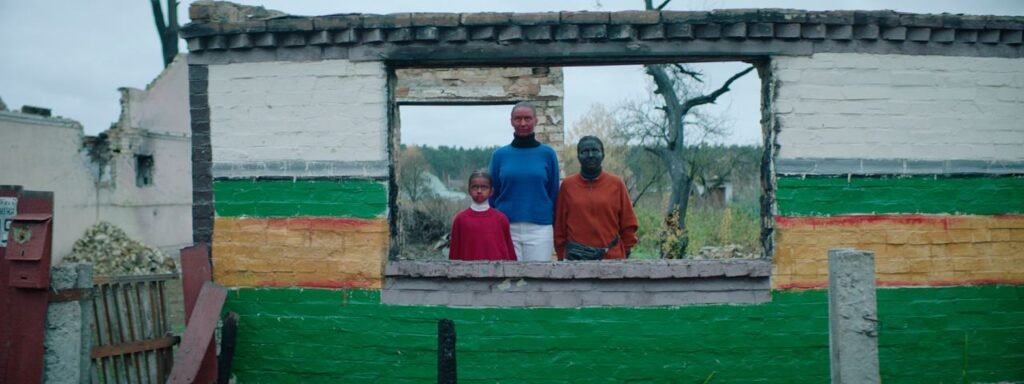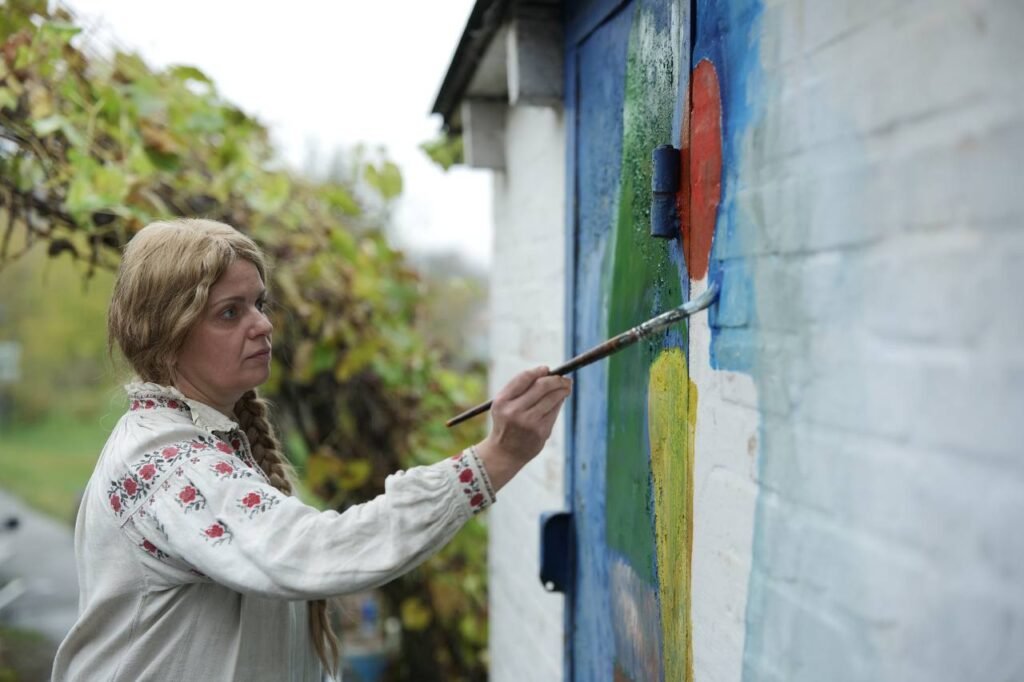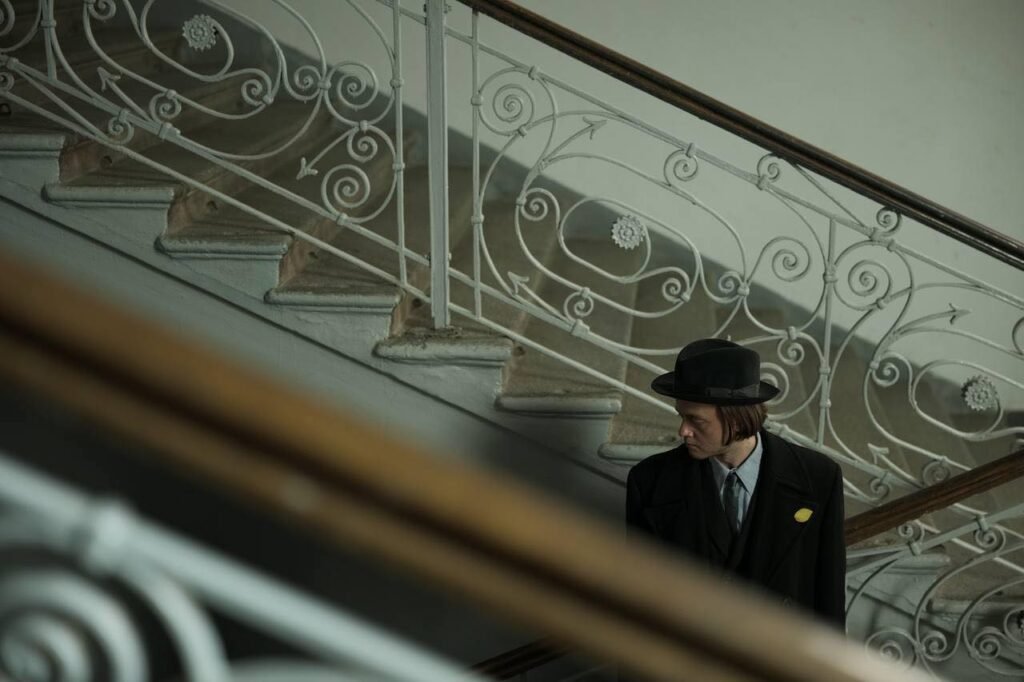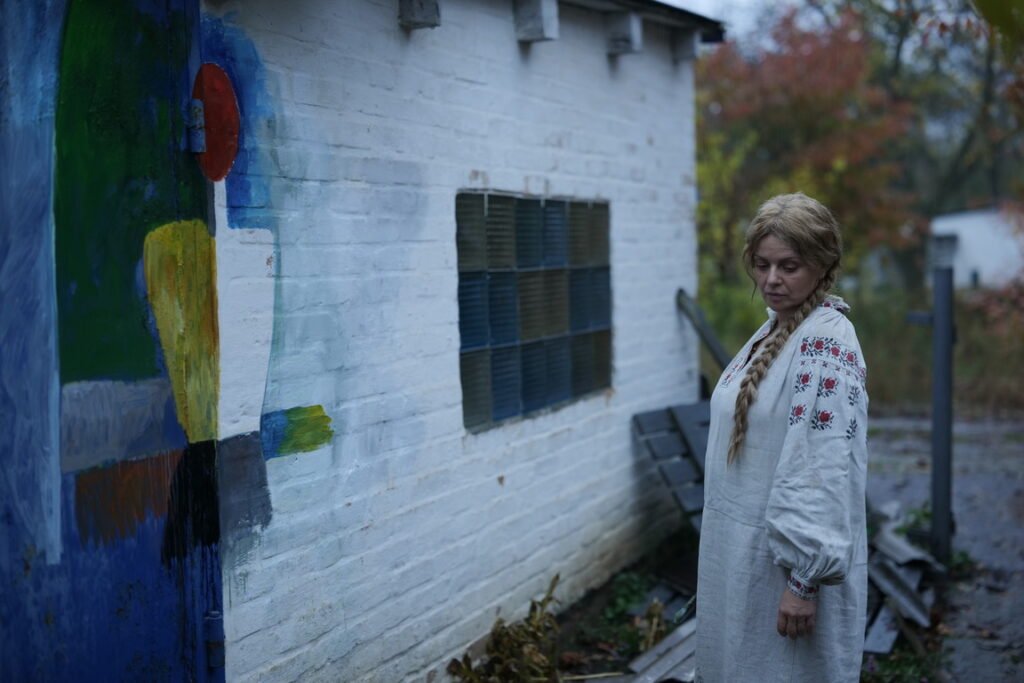"Malevich"
Screenwriters: Darya Onyshchenko, Anna Palenchuk
Director: Darya Onyshchenko
Cinematographer: Oleksandr Roshchyn
Cast: Vitalii Azhnov, Oleksii Horbunov, Irma Vitovska, Maryna Koshkina, Sasha Novikov, Kostiantyn Temliak, and others
Ukraine, Switzerland, Italy, Serbia, 2024.
The war for cultural heritage is an important component of Ukraine’s struggle for survival. In particular, since the beginning of the full-scale invasion, thanks to the efforts of activists, some world museums have “returned” to Ukraine artists once appropriated by Russia: Illia Repin, Ivan Aivazovsky, Arkhip Kuindzhi… Among these victories was the recognition by Amsterdam’s Stedelijk Museum of Kazimir Malevich as a Ukrainian, not Russian, artist. The fight for Malevich has been ongoing for quite some time: Dmytro Horbachov has consistently developed the theme of the Ukrainian avant-garde, with Malevich as one of its central figures (he is, in particular, the compiler of the anthology “He and I Were Ukrainians. Malevich and Ukraine” (2006)). The books “Kazimir Malevich. The Kyiv Period 1928–1930” and the multilingual “Kazimir Malevich. The Kyiv Aspect”, edited by Tetiana Filevska, were published in 2016 and 2019 respectively. In 2013, Jean-Claude Marcadé’s monograph “Malevich” (first published in 1990), in which considerable attention is devoted to the Ukrainian period of the artist’s work, was translated and released in Ukraine. Documentary filmmaking also made its contribution: “Malevich. The Ukrainian Square” by Dmytro Dzhulai (2018), produced by the Ukrainian bureau of Radio Free Europe/Radio Liberty, and “Malevich. Born in Ukraine” by Volodymyr Lutskiy and Ihor Malakhov, written by Tetiana Filevska (2019).


The feature film became a logical continuation of Malevich’s “return.” Darya Onyshchenko’s motion picture focuses on the artist’s creative explorations, from the staging of the futuristic opera “Victory over the Sun” in Moscow in 1913 to his teaching at the Kyiv Art Institute. The filmmakers slightly shifted the chronological framework of Malevich’s stay in Kyiv, so that in the plot the artist becomes a witness to the Holodomor during his “Kyiv period” (in reality, he taught there until 1930). They likewise “shifted” the teaching years at the KAI of another avant-gardist appropriated by Russia—Kharkiv-born Volodymyr Tatlin, who in fact taught there between 1925 and 1928. The ambivalent love–hate relationship of the two artists (“my honest enemy and best friend”), portrayed by Vitalii Azhnov (Malevich) and Sasha Novikov (Tatlin), became one of the film’s key “energy lines.” Together they are representatives of what was once the most progressive artistic movement, necessary to the Soviet system yet despised by it for their freedom-loving, rebellious spirit. This system is embodied by a Ukrainian-born former Moscow art professor who chooses to serve the new regime as an OGPU officer (Oleksii Horbunov). The filmmakers cleverly symbolized the inherently conservative spirit of Stalinist times by making the chief executor of the new regime’s orders a representative of the pre-revolutionary, “old-regime” world—someone who had understood and accepted neither avant-garde art under the tsarist authorities nor under the Bolsheviks. Malevich himself also becomes a symbol; in Vitalii Azhnov’s interpretation, he appears as a complex, enigmatic figure who never fully reveals himself to the viewer. While in a biographical film this might normally be seen as a flaw, here it harmoniously fits the concept—just as Malevich’s image in public and scholarly thought repeatedly demands new reinterpretation. In truth, the artist himself is a black square…
A successful device was the attempt to convey the restless creative spirit of the time through cinematic means. The film maintains a balance between “auteur” and “audience-oriented” cinema (notwithstanding the conditionality of both terms), using unexpected camera movements, angles, and a soft color palette punctuated with bright, ringing, “avant-garde” tones to evoke the feeling of the era. Cinematographer Oleksandr Roshchyn once again demonstrates the high level of the Ukrainian school of cinematography. The animated inserts are particularly engaging—an experimental play with avant-garde forms that at one moment transforms a girl’s face into a portrait, at another “deconstructs” the artist’s figure into basic shapes. Painting in "Malevich" is not simply a backdrop to the plot or even just the meaning of the artist’s life—it is a metaphor for the time itself, with its demiurgic pathos and the dramatic contrast between avant-garde experiments to transform the world through art and communist experiments to transform the world through violence. Painting seems to try to break through the wall of the screen: sometimes disrupting the space of the photographic image through the aforementioned animation, sometimes marking a link between eras in a scene where contemporary peasants with painted faces appear as figures from Malevich’s canvases. This striking image is essentially an artwork within an artwork, a happening inside the film. This approach is not new for Onyshchenko: in "The Forgotten," sculptor Mariia Kulykovska, playing a Russian sniper, shoots her own sculptures, theatrically reenacting the real story of militants destroying her works in Donetsk’s "Izolyatsia" in 2014. Yet, as we see, in "Malevich" the approach is not merely repeated but reinterpreted, gaining a new form and new meaning.


The connection between eras is another important message of the film, and its realization is the only aspect that invites criticism. If the final “happening,” with the peasants covered in paint, vividly transports the viewer from the famine-stricken Ukrainian village of the 1930s to the Ukrainian village of the 2020s devastated by Russian shelling, then the framing of Malevich’s story with that of a modern couple—a soldier and his girlfriend—seems rather awkward and overtly ura-patriotic.
In the end, "Malevich" is an undeniable success, the best (so far) film by Darya Onyshchenko. Yes, it is an overt piece of cultural weaponry, but it is also an artwork—one that is engaging to watch (and rewatch) even beyond the wars of memory. And if, at the mention of Malevich, the face of Vitalii Azhnov now comes to mind—would that not be the highest recognition of both an actor’s and a director’s triumph?
Вперше опубліковано в журналі «Кіно-Театр», №3, 2025.

